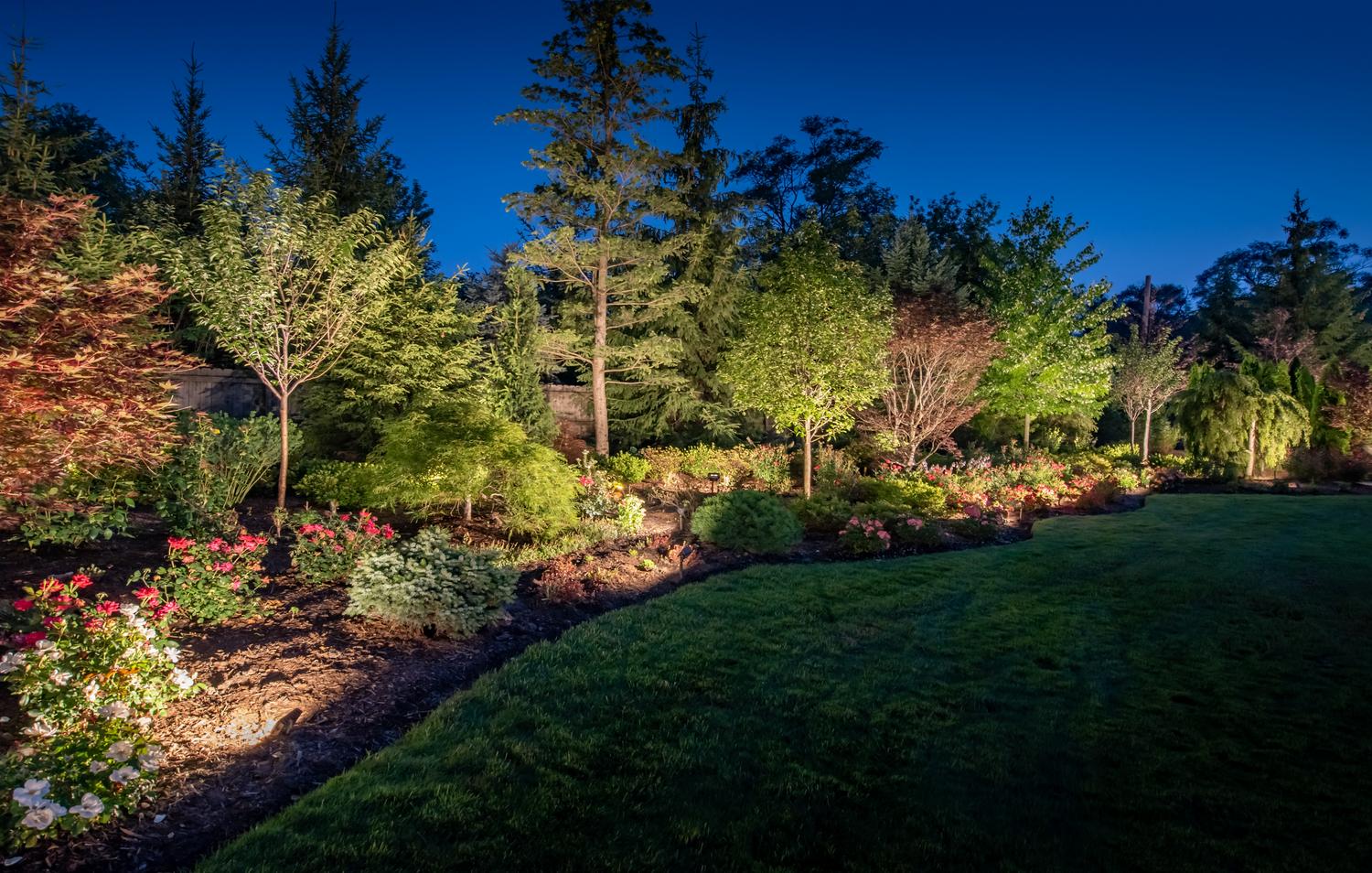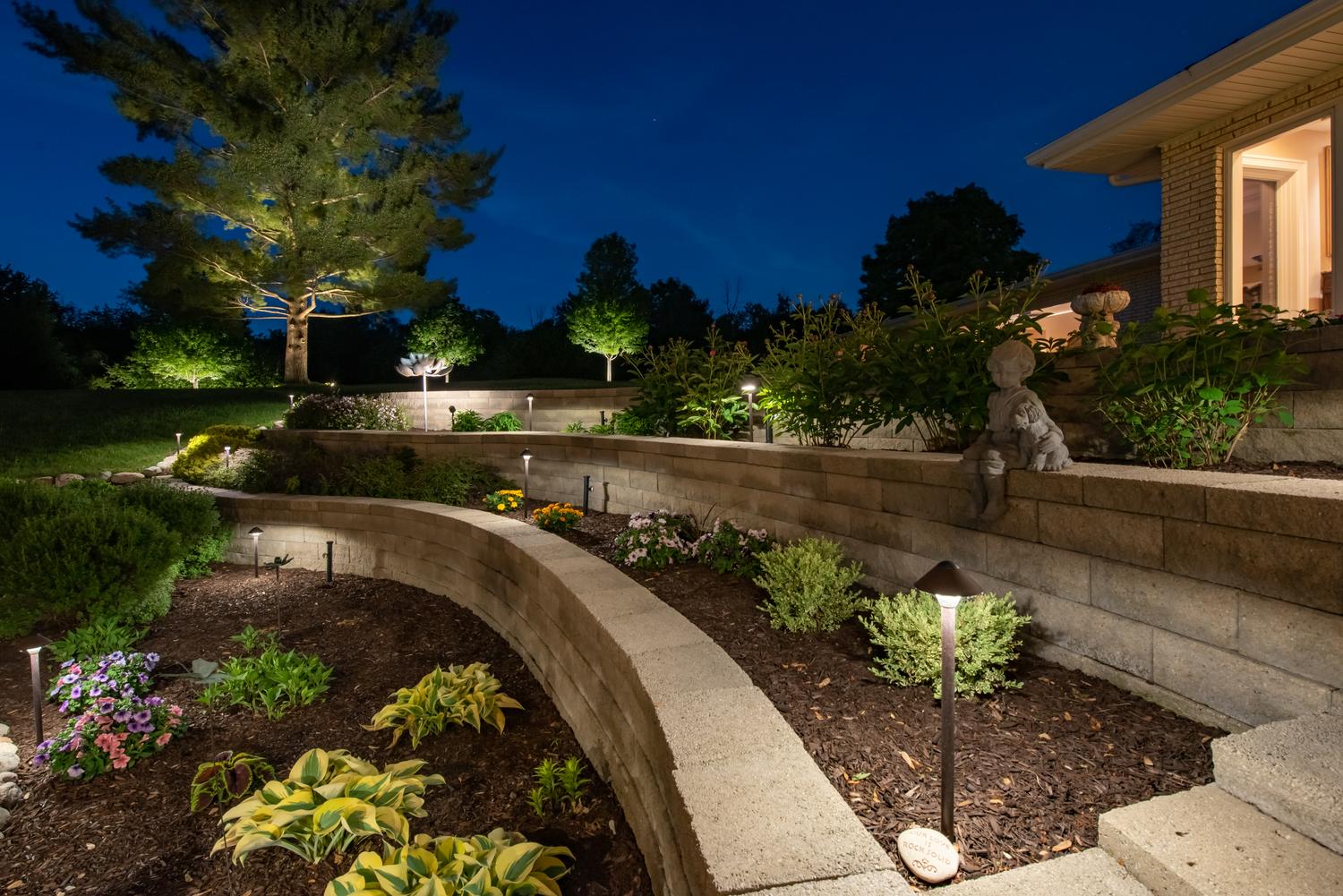Landscape Lighting
Show Off Your Stunning Property
Your landscaping is one of your home's loveliest features. Yet it’s probably hidden once the sun goes down—diminishing your enjoyment of the view and limiting usability. At Outdoor Lighting Perspectives®, our lighting experts orchestrate the outdoor lighting fixtures to set the mood you want—whether soft and romantic or cheerful and bright. We can even add a touch of color with warm washes of golden light, adding vibrancy and charm. If your landscaping could talk, it would thank you for making it look so terrific!
Our professional landscape lighting is tailored for:
- Trees
- Gardens
- Fountains
- Pathways
- Statues
- Stairs
- Gazebos

High-Quality, Durable Landscape Light Fixtures
Our landscape lighting systems utilize the highest quality fixtures in the industry. Solid copper and brass path lights and spotlights patina over time with a beautiful verdigris finish, blending seamlessly into the landscape. We’ve proudly finished over 150,000 U.S. installations and have more experience than any other lighting company. Since 1995, we’ve been enhancing the properties of homes of every size and style. We have proudly been featured in Southern Living, Inc. Magazine, Architectural Digest, Martha Stewart Living, and more. You can trust us to make your garden, yard, and lawn look stunning!

Request a Free Lighting Design Consultation
No two homes are the same, so it’s hard to imagine your home's appearance with landscape lighting. That’s why we offer complimentary lighting design plans custom-fit to your vision.
One of our professional lighting designers will tour your property with you and discuss your needs, your preferences, and what you’re looking to achieve with your outdoor lighting project. There is no one-size-fits-all approach to lighting your home. From specific lighting features to safety concerns to a particular mood, we want to get a comprehensive understanding of what you’re looking for.



.2401220820047.jpg)
